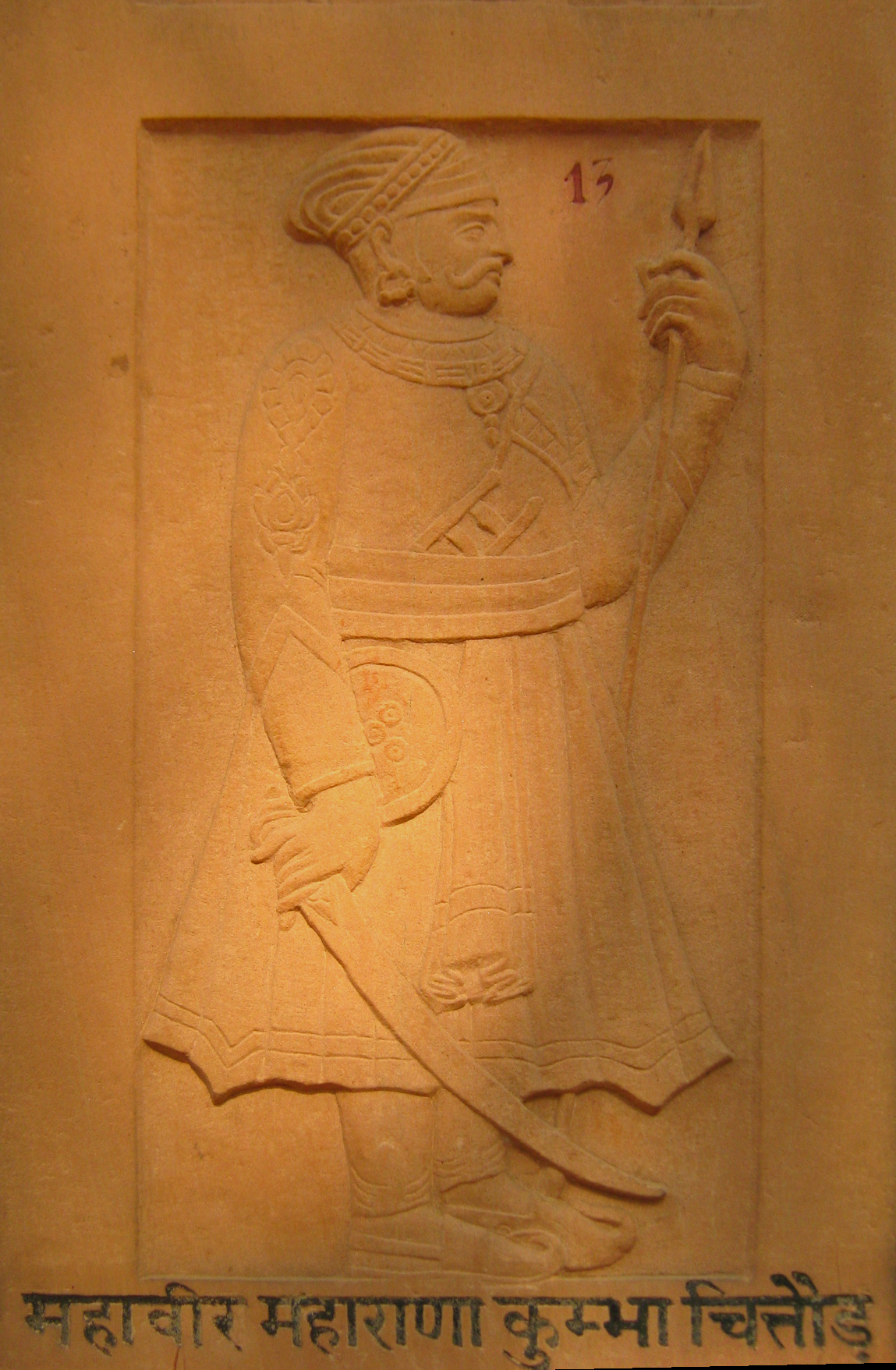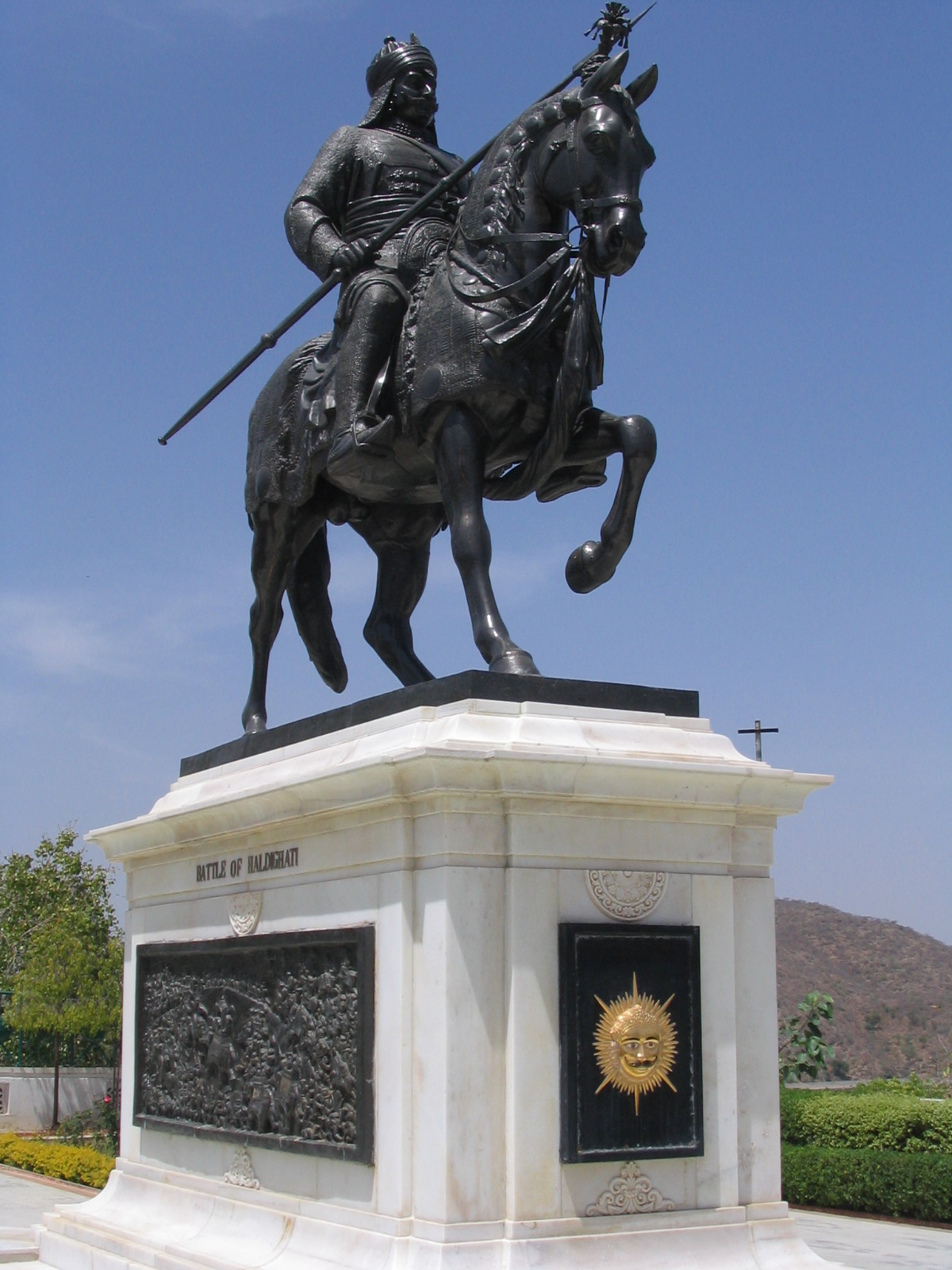|
Rao Surjan Singh
Rao Surjan Singh was the 14th Raja of Bundi. He was crowned in 1554. Life He was the governor of Ranthambore under the vassalage of the Sisodias of Mewar, until 1568. His son Duda allied with Maharana Pratap, and was defeated by the Mughal Empire The Mughal Empire was an early-modern empire that controlled much of South Asia between the 16th and 19th centuries. Quote: "Although the first two Timurid emperors and many of their noblemen were recent migrants to the subcontinent, the d ... after which he fled and Bundi was conferred upon Surjan's son Bhoj. After not getting any success in conquering the fort of Ranthambore, Emperor Akbar gave this task to Mansingh. Raja Man Singh made a courtesy call to Rao Surjan Singh with a fixed time. On this occasion, Raja Mansingh was accompanied by Akbar himself in the guise of Chobdar, who was recognized by the uncle of Rao Surjan Singh who was present there and was respectfully seated. After the intense consultation of Ra ... [...More Info...] [...Related Items...] OR: [Wikipedia] [Google] [Baidu] |
Bundi State
Bundi State was an India princely state, located in modern-day Rajasthan. It was ruled by Hada Chauhans. It was a princely state in the era of British India. The last ruler of Bundi State signed the accession to join the Dominion of India, Indian Union in 1949. History Medieval era Later the region was governed by Rao Deva, who took over Bundi in 1242, renaming the surrounding area as Haravati or Haroti. For the next two centuries, the Hadas of Bundi were the vassals of the Sisodias of Mewar and ruled by the title of Rao (title), Rao until 1569, when Emperor Akbar conferred the title of Rao Raja upon Rao Surjan Singh after the surrender of Ranthambore Fort and his submission. In 1632, Rao Raja Chattar Sal became the ruler, he built the Keshav Rai Temple, temple of Keshavarao at Keshoraipatan and Chathra Mahal at Bundi. He became king of Bundi after his grandfather Rao Ratan Singh, as his father Gopinath died while Ratan Singh was still ruling. He saw service with the ... [...More Info...] [...Related Items...] OR: [Wikipedia] [Google] [Baidu] |
Chandrasen Rathore
Rao Chandrasen Rathore () was a Rathore ruler of Marwar (in the present day Rajasthan state of India). He was a younger son of Rao Maldev Rathore. Chandrasen followed his father's policy and stayed hostile to the ruling foreign powers in India. He is also known as Pratap of Marwar. He defended his kingdom for nearly two decades against relentless attacks from the Mughal Empire. Early life Born on 30 July 1541, Chandrasen was the son of Rao Maldeo, Raja of Marwar. He was also the younger brother of Udai Singh, his successor. Maldeo named him his successor, putting aside the claims of his older brothers, Ram and Udai Singh. This led to an eternal rivalry between Chandrasen and Udai Singh. Reign On the death of Rao Maldeo, Chandrasen ascended the gadi (throne) of Marwar. Although there was no law of Primogeniture present, rarely had the rights of the older child been put aside. This led to feud between Chandrasen and his brothers. In 1562, Ramchandra, Udai Singh and Raima ... [...More Info...] [...Related Items...] OR: [Wikipedia] [Google] [Baidu] |
Governor
A governor is an administrative leader and head of a polity or political region, ranking under the head of state and in some cases, such as governors-general, as the head of state's official representative. Depending on the type of political region or polity, a ''governor'' may be either appointed or elected, and the governor's powers can vary significantly, depending on the public laws in place locally. The adjective pertaining to a governor is gubernatorial, from the Latin root ''gubernare''. Ancient empires Pre-Roman empires Though the legal and administrative framework of provinces, each administrated by a governor, was created by the Romans, the term ''governor'' has been a convenient term for historians to describe similar systems in antiquity. Indeed, many regions of the pre-Roman antiquity were ultimately replaced by Roman 'standardized' provincial governments after their conquest by Rome. Plato used the metaphor of turning the Ship of State with a rudder; the Latin ... [...More Info...] [...Related Items...] OR: [Wikipedia] [Google] [Baidu] |
Ranthambore Fort
Ranthambore Fort lies within the Ranthambore National Park, near the city of Sawai Madhopur in Sawai Madhopur district of Rajasthan, India. the park being the former hunting grounds of the Maharajahs of Jaipur until the time of India's Independence. It is a formidable fort having been a focal point of the historical developments of Rajasthan. The fort is believed to be constructed by the Chahamanas. In the 13th century the Delhi Sultanate captured it for a brief time. The fort provides a panoramic view of the surrounding Ranthambore National Park and is now a popular tourist attraction. In 2013, at the 37th session of the World Heritage Committee, Ranthambore Fort, along with 5 other forts of Rajasthan, was declared a UNESCO World Heritage Site under the group Hill Forts of Rajasthan. History The oldest settlement in the area near Sawai Madhopur was around the Ranthambhore fort. The exact origin of the Ranthambore fort is still disputed but it is generally accepted that the ... [...More Info...] [...Related Items...] OR: [Wikipedia] [Google] [Baidu] |
Sisodia
The Sisodia is an Indian Rajput dynasty belonging to the clan that ruled over the kingdom of Mewar in Rajasthan. The name of the clan is also transliterated as ''Sesodia'', ''Shishodia'', ''Sishodia'', ''Shishodya'', ''Sisodya'', ''Sisodiya'', ''Sisodia''. Origins The Sisodia dynasty traced its ancestry to Rahapa, a son of the 12th century Guhila King Ranasimha. He founded the village of Shisoda, in modern day Rajsamand district, as his capital, after which his descendants were called Sisodias. The main branch of the Guhila dynasty ended with their defeat against the Khalji dynasty at the Siege of Chittorgarh (1303). In 1326, Rana Hammir, who belonged to Sisodiya branch, reclaimed control of the region, re-established the dynasty, and also became the founder of the Sisodia dynasty clan, a branch of the Guhila dynasty, to which every succeeding Maharana of Mewar belonged, and the Sisodias regained control of Chittor, the former Guhila capital.''The Rajputs of Rajputana: a gl ... [...More Info...] [...Related Items...] OR: [Wikipedia] [Google] [Baidu] |
Mewar
Mewar or Mewad is a region in the south-central part of Rajasthan state of India. It includes the present-day districts of Bhilwara, Chittorgarh, Pratapgarh, Rajsamand, Udaipur, Pirawa Tehsil of Jhalawar District of Rajasthan, Neemuch and Mandsaur of Madhya Pradesh and some parts of Gujarat. For centuries, the region was ruled by Rajputs. The princely state of Udaipur emerged as an administrative unit during the period of British East India Company governance in India and remained until the end of the British Raj era. The Mewar region lies between the Aravali Range to the northwest, Ajmer to the north, Gujarat and the Vagad region of Rajasthan to the south, the Malwa region of Madhya Pradesh state to the south and the Hadoti region of Rajasthan to the east. Etymology The word "Mewar" is vernacular form of "Medapata" ( IAST: Medapāṭa), the ancient name of the region. The earliest epigraph that mentions the word "Medapata" is a 996–997 CE (1053 VS) inscription discovered ... [...More Info...] [...Related Items...] OR: [Wikipedia] [Google] [Baidu] |
Maharana Pratap
Pratap Singh I, popularly known as Maharana Pratap (c. 9 May 1540 – 19 January 1597), was a king of Mewar from the Sisodia dynasty. Pratap became a folk hero for his military resistance against the expansionism of the Mughal Empire under Akbar through guerrilla warfare which proved inspirational for later rebels against Mughals including Shivaji. Early life and accession Maharana Pratap was born to Udai Singh II of Mewar and Jaiwanta Bai. His younger brothers were Shakti Singh, Vikram Singh and Jagmal Singh. Pratap also had 2 stepsisters: Chand Kanwar and Man Kanwar. He was married to Ajabde Punwar of Bijolia and he had married 10 other women and was survived by 17 sons and 5 daughters including Amar Singh I. He belonged to the Royal Family of Mewar. After the death of Udai Singh in 1572, Rani Dheer Bai wanted her son Jagmal to succeed him but senior courtiers preferred Pratap, as the eldest son, to be their king. The desire of the nobles prevailed. Udai Singh died in ... [...More Info...] [...Related Items...] OR: [Wikipedia] [Google] [Baidu] |
Mughals
The Mughal Empire was an early-modern empire that controlled much of South Asia between the 16th and 19th centuries. Quote: "Although the first two Timurid emperors and many of their noblemen were recent migrants to the subcontinent, the dynasty and the empire itself became indisputably Indian. The interests and futures of all concerned were in India, not in ancestral homelands in the Middle East or Central Asia. Furthermore, the Mughal empire emerged from the Indian historical experience. It was the end product of a millennium of Muslim conquest, colonization, and state-building in the Indian subcontinent." For some two hundred years, the empire stretched from the outer fringes of the Indus River, Indus river basin in the west, northern Afghanistan in the northwest, and Kashmir in the north, to the highlands of present-day Assam and Bangladesh in the east, and the uplands of the Deccan Plateau in South India. Quote: "The realm so defined and governed was a vast territory of ... [...More Info...] [...Related Items...] OR: [Wikipedia] [Google] [Baidu] |
Maharajas Of Bundi
Mahārāja (; also spelled Maharajah, Maharaj) is a Sanskrit title for a "great ruler", "great king" or " high king". A few ruled states informally called empires, including ruler raja Sri Gupta, founder of the ancient Indian Gupta Empire, and Chandragupta Maurya. 'Title inflation' soon led to most being rather mediocre or even petty in real power, which led to compound titles (among other efforts) being used in an attempt to distinguish some among their ranks. The female equivalent, Maharani (or Maharanee, Mahārājñī, Maharajin), denotes either the wife of a Maharaja (or Maharana etc.) or also, in states where it was customary, a woman ruling without a husband. The widow of a Maharaja is known as a Rajmata, "queen mother". Maharajakumar generally denotes a son of a Maharaja, but more specific titulatures are often used at each court, including Yuvaraja for the heir (the crown prince). The form "Maharaj" (without "-a") indicates a separation of noble and religious office ... [...More Info...] [...Related Items...] OR: [Wikipedia] [Google] [Baidu] |
16th-century Indian Royalty
The 16th century begins with the Julian year 1501 ( MDI) and ends with either the Julian or the Gregorian year 1600 ( MDC) (depending on the reckoning used; the Gregorian calendar introduced a lapse of 10 days in October 1582). The 16th century is regarded by historians as the century which saw the rise of Western civilization and the Islamic gunpowder empires. The Renaissance in Italy and Europe saw the emergence of important artists, authors and scientists, and led to the foundation of important subjects which include accounting and political science. Copernicus proposed the heliocentric universe, which was met with strong resistance, and Tycho Brahe refuted the theory of celestial spheres through observational measurement of the 1572 appearance of a Milky Way supernova. These events directly challenged the long-held notion of an immutable universe supported by Ptolemy and Aristotle, and led to major revolutions in astronomy and science. Galileo Galilei became a champion of ... [...More Info...] [...Related Items...] OR: [Wikipedia] [Google] [Baidu] |







